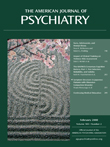Hippocampal Morphology and Distinguishing Late-Onset From Early-Onset Elderly Depression
Abstract
Objective: Despite evidence for hippocampal abnormalities in elderly depression, it is unknown whether these changes are regionally specific. This study used three-dimensional mapping techniques to identify regional hippocampal abnormalities in early- and late-onset depression. Neuropsychological correlates of hippocampal morphology were also investigated. Method: With high-resolution magnetic resonance imaging, hippocampal morphology was compared among elderly patients with early- (N=24) and late-onset (N=22) depression and comparison subjects (N=34). Regional structural abnormalities were identified by comparing distances, measured from homologous hippocampal surface points to the central core of each individual’s hippocampal surface model, between groups. Results: Hippocampal volumes differed between depressed patients and comparison subjects but not between patients with early- and late-onset depression. However, statistical mapping results showed that regional surface contractions were significantly pronounced in late- compared to early-onset depression in the anterior of the subiculum and lateral posterior of the CA1 subfield in the left hemisphere. Significant shape differences were observed bilaterally in anterior CA1-CA3 subfields and the subiculum in patients in relation to comparison subjects. These results were similar when each disease group was separately compared to comparison subjects. Hippocampal surface contractions significantly correlated with memory measures among late- but not early-onset depressed patients or comparison subjects. Conclusions: More pronounced regional volume deficits and their associations with memory in late-onset depression may suggest that these patients are more likely to develop cognitive impairment over time than individuals with early-onset depression. Mapping regional hippocampal abnormalities and their cognitive correlates may help guide research in defining risk profiles and treatment strategies.



